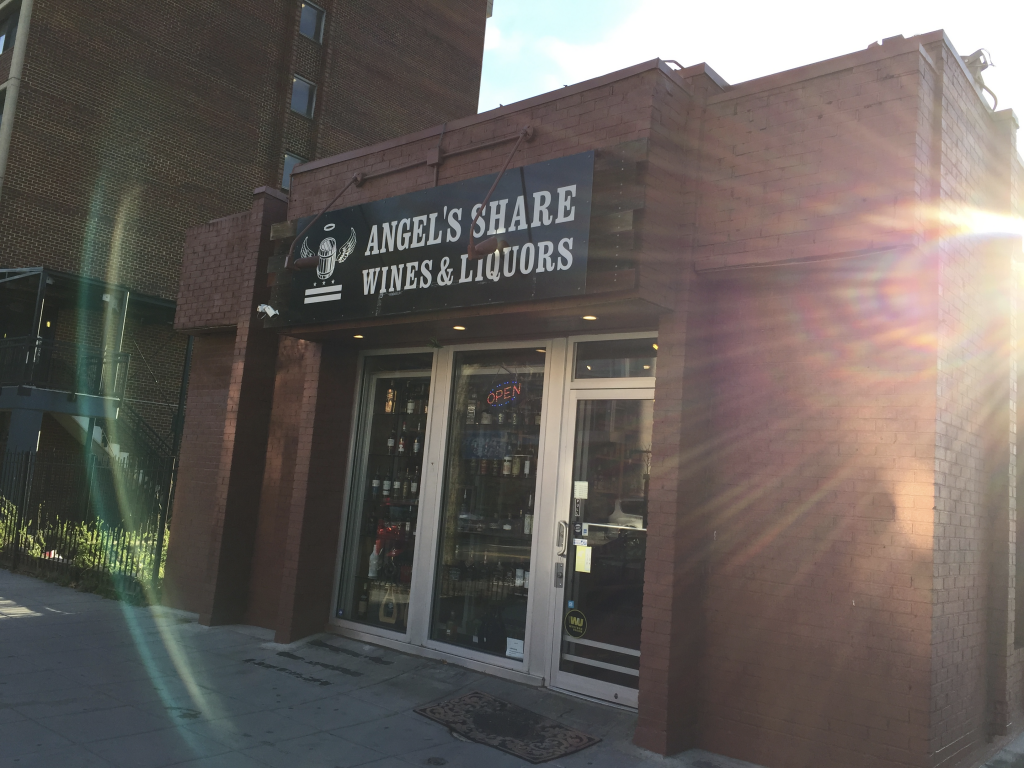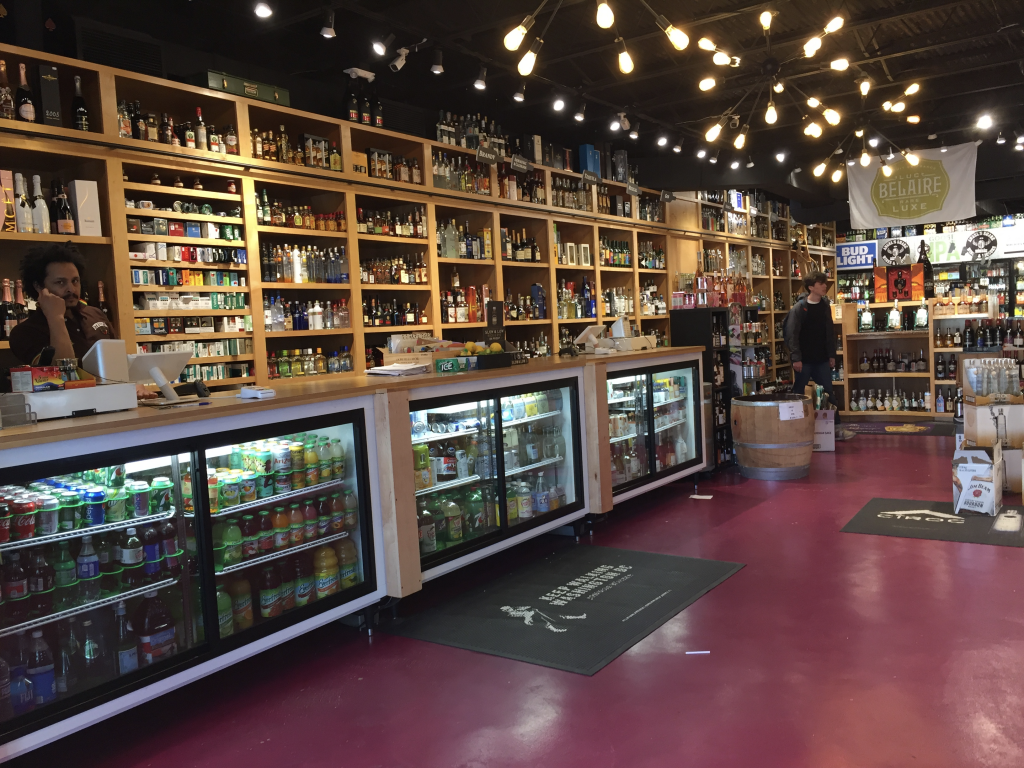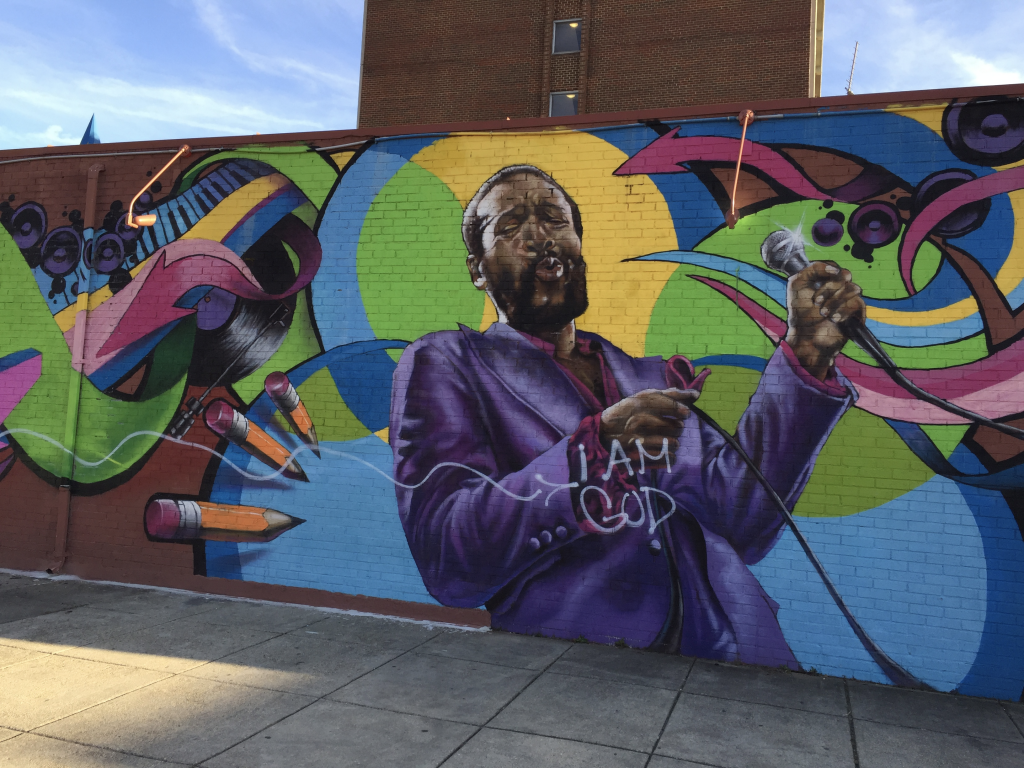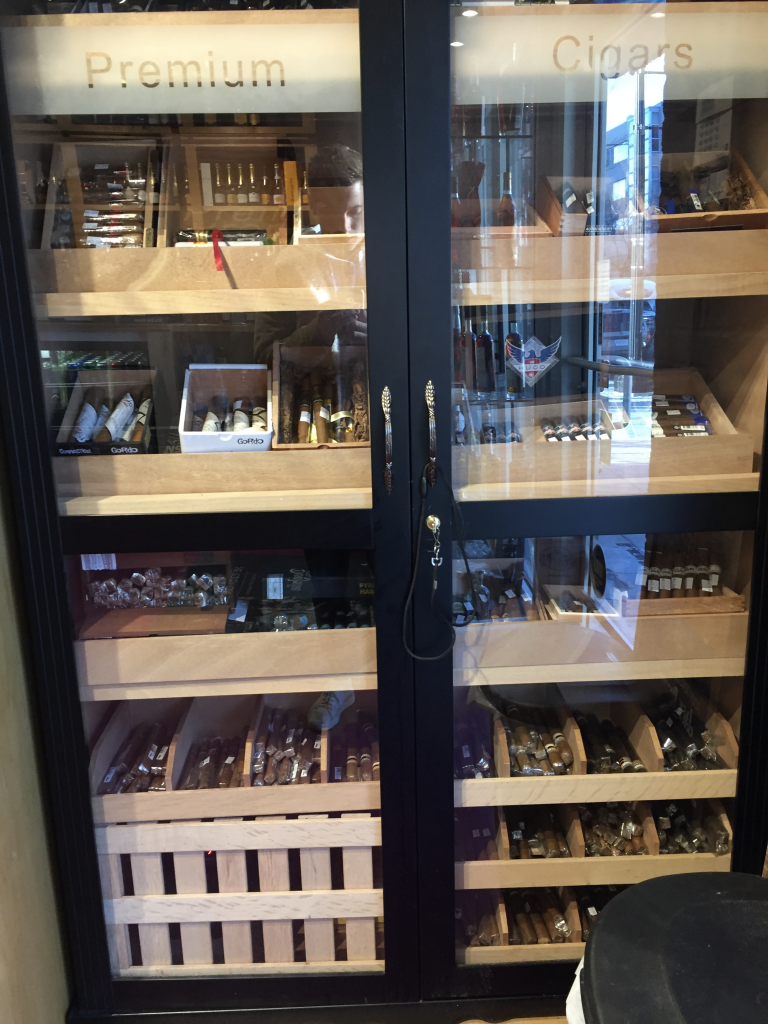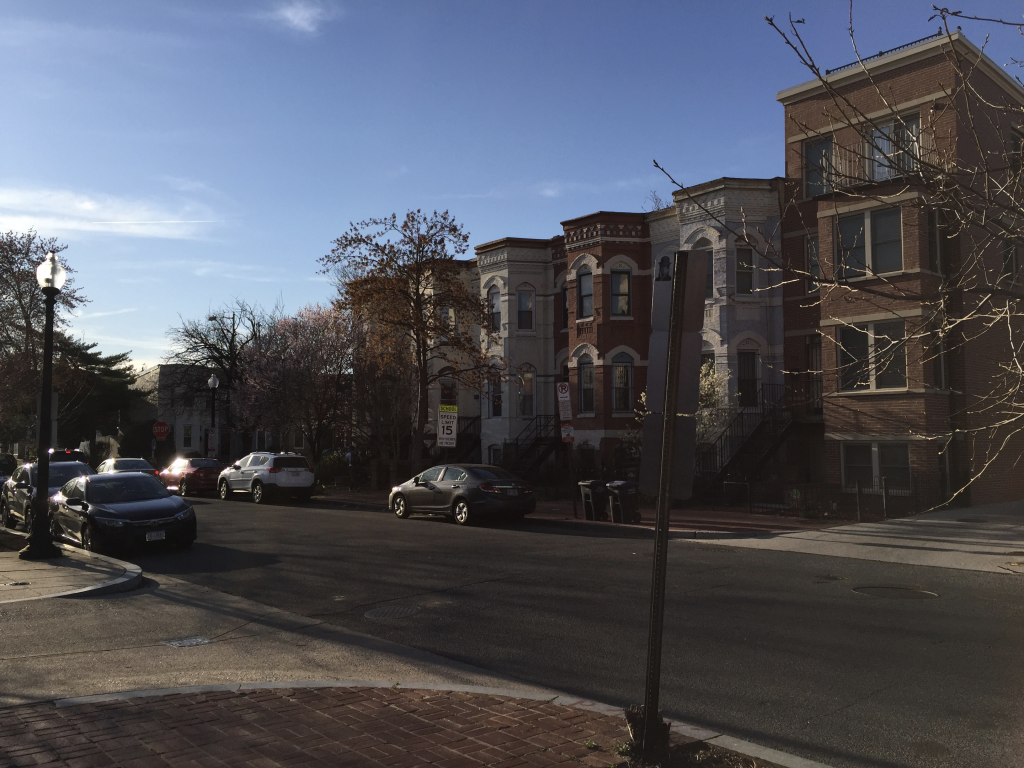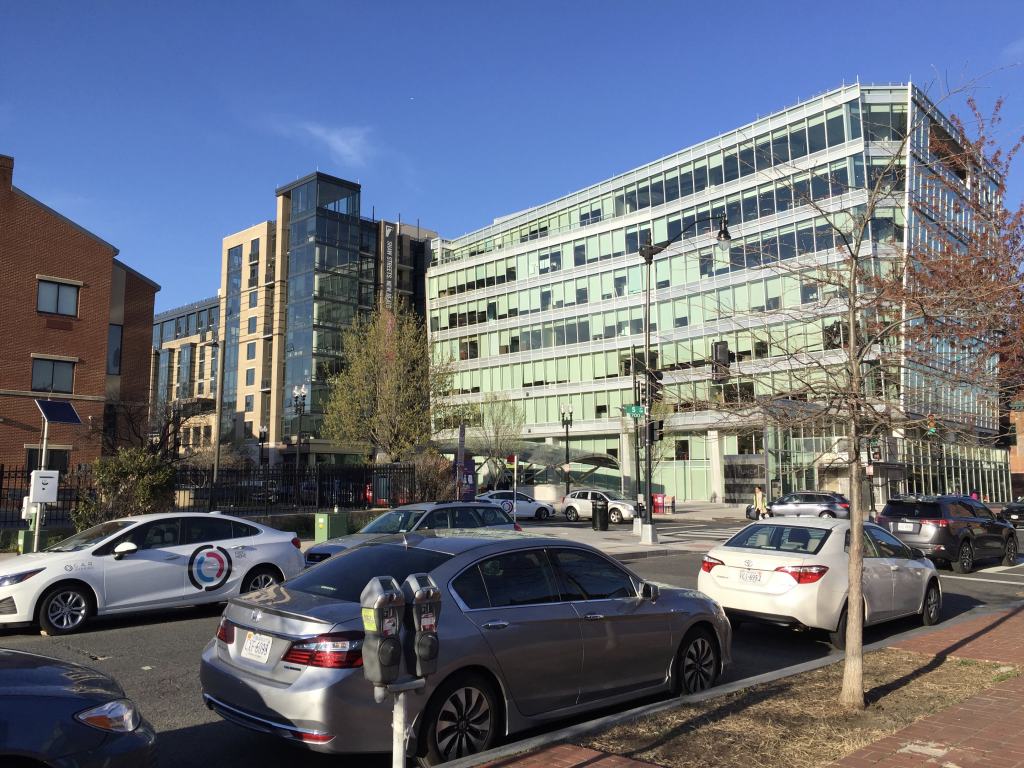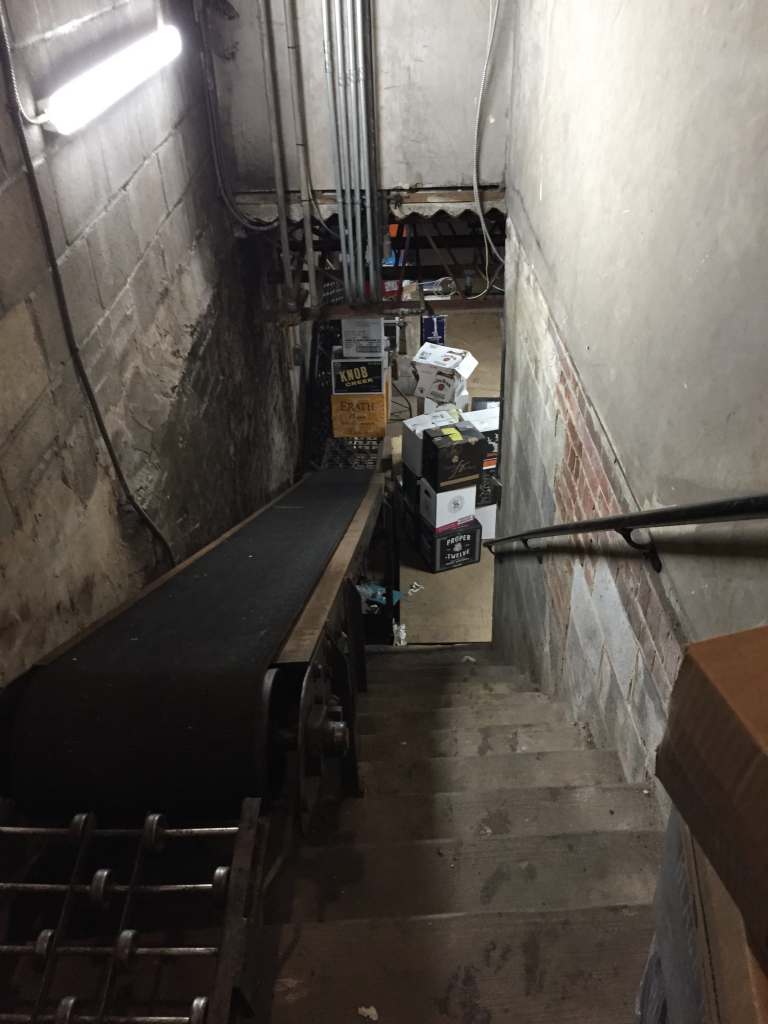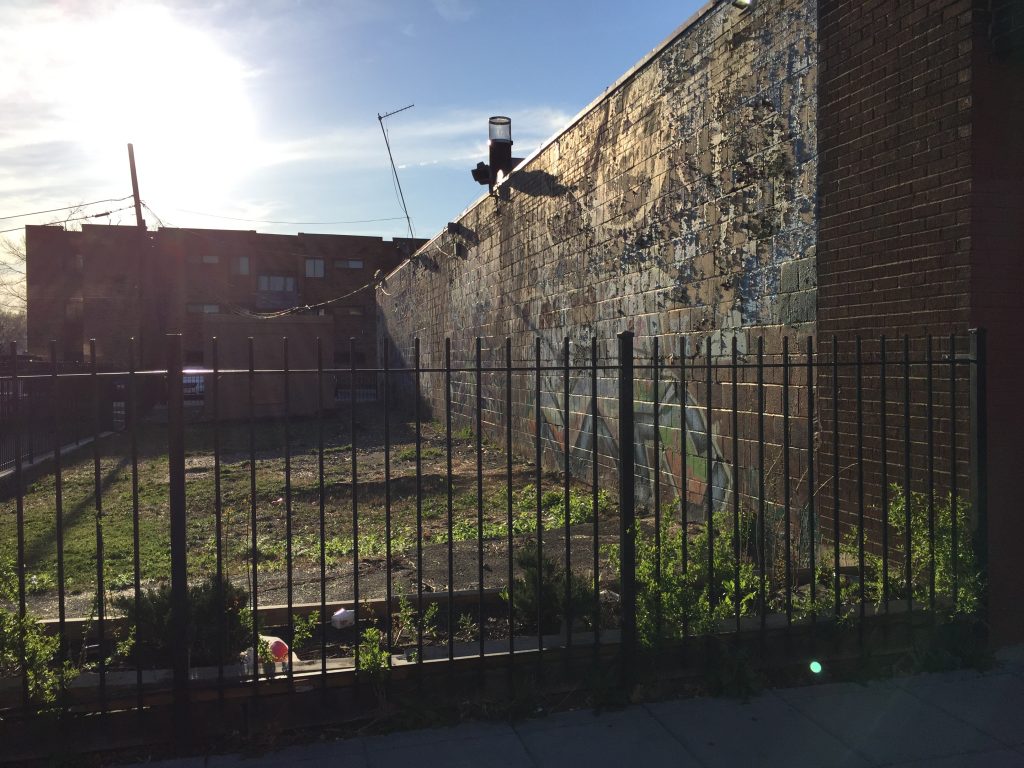Walking into Angel’s Share Wines and Liquors, the man at the counter probably expected that my two classmates and I were paying customers. I approached the cashier and explained that we were Georgetown students, and, weirdly, we had traveled across DC to his establishment for a class project. I told him that in the 1980s, his shop had been a nightclub, and we were exploring its transformation and the history behind it. He seemed more confused than intrigued. Angel’s Share Wines and Liquors is a pretty standard liquor store, with bottles lining the walls and shelves, refrigerators at the back wall, and tobacco products on the wall behind the counter. The floors are a dark red, and the shelves are made of a light-colored wood. From the ceiling hang chandeliers of sorts with light bulbs attached to metal poles that branch off in all directions from the center. Immediately on the right upon walking in is a classy cigar container, with a sign reading “Premium Cigars.” On the far side of the store, where the fridges are, to the right there is a concrete staircase going into the basement, where they presumably store inventory. The left side of the staircase has a conveyor belt for transporting the inventory up into the main floor, and there are disorganized stacks of both full and empty cases of various liquors and spirits at the bottom. I was curious to go downstairs and look around, but I had to draw the line somewhere. I imagine that in the era of John’s Place, they (the owners and employees of the club), too, made use of the basement for alcohol storage, and perhaps any other inventory they would keep. Maybe they had glasses, straws, and other items that a club requires but a liquor store does not, or maybe they had a few chairs and employees took their breaks there. Additionally, the liquor store is a functioning Western Union location, which may offer more insight into the demographics the store serves as many modern users of in-person Western Union locations are immigrants and, in some cases, refugees. Obviously, there was not much to recognize or extrapolate from what I found on the inside of the store; no real signs of a 1980s nightclub remained. On the way out, I felt like I should buy something so as not to be rude. After all, I had snooped around for a few minutes and we were the only people in the store. Of course, I’m 18 years old and not of age to buy liquor, so, to the cashier’s amusement, I bought a Red Bull, and we continued on our way.
